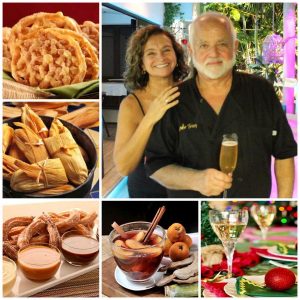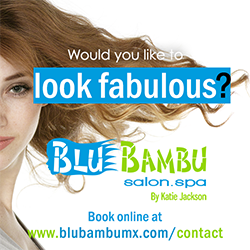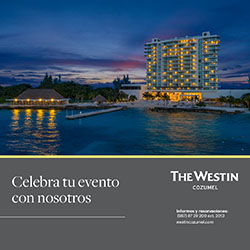Mexican Recipes Jitomate Relleno; Chef Alejandro Torres 10 Experiences Tour Cozumel
Mexican Recipes Jitomate Relleno; Chef Alejandro Torres 10 Experiences Tour Cozumel
Mexican Récipes: Jitomate Relleno
Chef Alejandro Torres, 10 Experiences Tour Cozumel
It is always a pleasure for me, Alejandro Torres Executive Chef of 10 Experiences Tour, to share with you an easy and delicious recipe; quite appropriate when you want to surprise your loved ones. Here’s how to prepare Jitoroz for four people. Let’s start:
- a) The star vegetable will be the ball tomato, which will be stuffed with the combination that will make an explosion of flavors. Here are the ingredients:
(2) husk tomato (“tomatillo”) or green tomato
(1) tablespoon of chopped cilantro
(1) tablespoon of chopped parsley
(1) yellowfin canned tuna steak (in water) (140 gr. can)
(1) green peas 100 gr.
(1) corn kernels 100 gr.
(3) tablespoons mayonnaise
(1) pinch of sea salt
(1) pinch of fine Provençal herbs (crushed)
(1) pinch ground black pepper
(2) tablespoons of extra virgin olive oil
Once the ingredients have been rinsed and disinfected, we take the tomato cutting a lid at the top and carefully extracting all the pulp. Remove the seeds. Cut into squares and set aside. Finely chop the cilantro and parsley. Cut the tomatillo in small squares. Cook the peas, corn kernels and tuna.
We place all ingredients in a bowl: tuna, peas, corn and add the tomato, tomatillo, cilantro, parsley, salt, fine herbs and pepper, olive oil and finally the mayonnaise. Mix all the ingredients with a wooden spoon and fill the tomatoes. Place them in a refractory dish and place them in the oven at 180oC (356oF) for 20 minutes.
- b) We will add a portion of elements that exquisitely combine. These are the ingredients:
(1) cup of long-grain rice, super extra
(2) tablespoons of olive oil
(1) white onion 15 gr.
(2) garlic cloves 5 gr.
(1) avocado 160 gr.
(1) jar dried jocoque (Mexican style sour cream)
(1) pinch of salt
(2) tablespoons white sesame seeds
(1) purified water
We prepare the rice in the traditional way; washing and drying to eliminate part of the starch. Then, heat oil then in a pan and fry the grains of rice lightly. Add hot water, onion, garlic, and salt to taste, and stir.
Leave the heat on high for a moment and lower the flame to the minimum. Keep it covered with a lid. Check the cooking level after 15 minutes. With a wooden spoon pen some spaces so the rice may breathe and let it rest without the lid, until it reaches the desired temperature.
Remove the pulp of the avocado and cut into squares. Have the jocoque and the golden sesame available for serving.
Serving:
Place the tomato on a large plate at one end and at the other end, with the help of a non-stick removable mold for a better visual effect, place a portion of avocado on the base, a layer of jocoque, top with rice and crown with sesame seeds.
As always, I am interested in including some concepts of the main ingredients, to know something more about what we are going to enjoy.
The ball tomatoes. – This fruit was domesticated and baptized in Mexico. A genus type vegetable, which can grow in soils that have different conditions. It is a climbing plant with a rigid stem and yellow hermaphrodite flowers that produce a beautiful xicititomatl (in Nahuatl) or “navel tomato” fruit in the shape of a bright, red-colored balloon and mild flavor, eaten separately or in a variety of preparations.
Rice. – A seed of the Oryza sativa or Oryza glaberrima plant. A cereal considered a staple food in many cuisines around the world. Rice is the second most produced cereal in the world, after corn and over wheat.
Husk tomato (“tomatillo”) or green tomato. – Its scientific name is Physalis philadelphica, a phanerogam species of the Solanaceae family. The word “miltomate” comes from the Nahuatl “milli“, milpa, sown, and “tomatl“, tomato. Common of every table in Mexico having been used since pre-Columbian times which gives this proposal the necessary acidity for balance.
Tuna. – Classified within what we call oily fish, given its high content of omega-3 fatty acids, very beneficial for our health. Among other nutrients, it provides high quality proteins, B vitamins and minerals such as iron, magnesium, and phosphorus, it makes the perfect blend.
Jocoque. – Its origin is uncertain, although there are elements that attribute its creation to pre-Hispanic Mexico since there is a Nahuatl word: “xocotl” which means sour. There used to be a similar Aztec word to refer to sour milk fermented in clay pots and used as food served with freshly made tortillas and hot peppers. Others will say that jocoque is of Arab origin and they are right. It enhances the dish.
Avocado. – A tree native to Mexico. Its name comes from the Nahuatl ahuacatl which means “tree testicles”, because of the shape of the fruit. The avocado belongs to the Lauraceae family native to Mesoamerica and is part of the diet throughout the Mexican Republic and significant quantities of it are exported worldwide.
Finally, you can pair it with a white wine Chardonnay of Parras Coahuila from Casa Madero, yellow with golden sparkles. An intensely aromatic bouquet of guava, apple, pear, orange blossoms while it refreshingly envelops the mouth. Well, there is much to talk about this excellent wine, so it’s better to go buy one and enjoy the ensemble I propose.
Recetas mexicanas: Jitomate Relleno
Chef Alejandro Torres de 10 Experiences Tour Cozumel
Con el gusto de siempre, Alejandro Torres chef ejecutivo de 10 Experiences Tour, les comparto la receta sencilla y deliciosa, aplicable en todo momento, para cuando quieras sorprender a tus seres querido, te presento la elaboración para cuatro personas del Jitoroz, comencemos:
- La hortaliza estrella será el jitomate bola, que será relleno de la combinación que hará explosión de sabores, listo los ingredientes:
(2) tomatillo o tomate verde
(1) cucharada de cilantro picado
(1) cucharada de perejil picado
(1) lomo de atún en lata (en agua) aleta amarilla 140 gr. (lata)
(1) chicharos 100 gr.
(1) granos de elotes 100 gr.
(3) cucharadas de mayonesa
(1) pizca de sal de mar
(1) pizca de hierbas finas provenzales (trituradas)
(1) pizca de pimienta negra molida
(2) cucharadas de aceite de oliva extra virgen
Una vez lavados los ingredientes y desinfectados, procedemos a tomar el jitomate, cortar una tapa en la parte superior y extraer cuidadosamente toda la pulpa, quitar las semillas, cortar en cuadros y reservar, picar cilantro y perejil finamente, el tomatillo en cuadros pequeños, cocinar los chicharos, los granos de elote y el atún.
En tazón iremos poniendo todos los componentes: el atún, chicharos, elotes e incorporamos el jitomate, tomatillo, cilantro, perejil, al gusto la sal, hierbas finas y pimienta, aceite de oliva y finalmente la mayonesa, con cuchara de madera revolver todos los ingredientes y rellenar los jitomates. En refractario se colocan para meterlos a la hora que se disponga al horno, a 180 grados C por 20 minutos.
- Haremos acompañar de una porción de elementos que combinan de manera exquisita, listamos los insumos:
- taza de arroz de grano largo, súper extra
- cucharadas de aceite de oliva
(1) cebolla blanca 15 gr.
(2) dientes de ajo 5 gr.
(1) aguacate 160 gr.
(1) bote de jocoque seco
(1) pizca de sal
(2) cucharadas de ajonjolí blanco
(1) agua purificada
Preparamos el arroz de manera tradicional, lavando y secando para eliminar parte del almidón, después poner en la olla a calentar el aceite luego, freír ligeramente los granos de arroz, en triturador añadimos el agua acliengte, cebolla, ajo y sal al gusto, incorporamos todo y revolvemos.
Dejarlo por un momento con alta temperatura y bajar la llama al mínimo y mantenerla tapada. En 15 minutos revisar el nivel de cocimiento, abrir algunos espacios con una cuchara de madera para que respire y dejarlo reposar sin tapa, hasta que llegue a la temperatura deseada.
Sacar la pulpa del aguacate y cortarla en cuadros, tener disponible el jocoque y el ajonjolí dorado, para la presentación.
Presentación
En plato grande poner el jitomate en un extremo y en el otro ayudados de un molde desmontable antiadherente, para darle mayor vista, colocar porción de aguacate en la base, capa de jocoque, completar con arroz y coronar con el ajonjolí.
Como siempre me interesa adjuntar algunos conceptos de los principales insumos, saber algo sobre lo que vamos a deleitar.
El jitomate de bola. – Es en México donde se doméstico y se bautizó este fruto, del genero tipo hortaliza, capaz de crecer en suelos con diferentes características, se trata de una planta trepadora con tallo rígido y flores hermafroditas de color amarillo que producen un hermoso xicititomatl (en náhuatl) o “tomate de ombligo” fruto en forma de globo, color rojo intenso y sabor suave, que se come solo o en múltiples aplicaciones.
El arroz. – Es una semilla de la planta Oryza sativa o de Oryza glaberrima. Se trata de un cereal considerado alimento básico en muchas gastronomías del mundo. El arroz es el segundo cereal más producido en el mundo, detrás del maíz y por delante del trigo.
Tomatillo de cascara o tomate verde. – Su nombre científico, Physalis philadelphica es una especie fanerógama de la familia Solanaceae. La palabra miltomate procede del náhuatl “milli”, milpa, sembrado, y “tomatl”, tomate. Forma parte de todas las mesas en México, se utiliza desde tiempos precolombinos y le aporta a esta propuesta la parte de acidez necesaria para el balance.
Atún. – Se clasifica dentro de lo que denominamos pescado azul, dado su gran contenido en ácidos grasos omega-3, muy beneficiosos para nuestra salud. Entre otros nutrientes, nos aporta proteínas de alta calidad, vitaminas del grupo B y minerales como el hierro, magnesio y fósforo, hace el ensamble perfecto.
Jocoque. – El origen es incierto, aunque hay elementos que adjudican su creación al México prehispánico pues existe desde entonces un vocablo náhuatl: “xocotl” que significa agrio y existía un vocablo similar azteca para referirse a la leche agria fermentada en las vasijas de barro y que utilizaban como alimento acompañado con tortilla recién hecha y chile. Otros dirán que el jocoque es de origen árabe y tienen razón, hace realzar el platillo.
Aguacate. – Árbol originario de México, su nombre proviene del náhuatl ahuacatl, que significa “testículos de árbol”, por la forma del fruto. El aguacate pertenece a la familia Lauraceae, originaria de Mesoamérica, forma parte de la dieta en toda la república mexicana, exportando cantidades muy importantes a todo el mundo.
Finalmente podrás acompañar con un vino blanco de Casa Madero, Chardonnay de Parras Coahuila, a la vista amarillo con destellos dorados, en nariz gran intensidad aromática como guayaba, manzana, pera, flores de azar, en boca envolvente, refrescante, bueno habría mucho que hablar de este excelente vino, mejor ve compra uno y disfruta el ensamble que te propongo.
______________________________
Una ex yanqui de Connecticut quien llama hogar a Cozumel desde hace más de 15 años. Laura escapó al Caribe hace años, desplazándose de una isla a otra dando clases de BUCEO. Se dedicó a perder el tiempo en Jamaica y finalmente se detuvo en Cozumel para pasar unas vacaciones de 2 semanas que aún no terminan. Convenciendo a sus padres que pagaran una elegante universidad privada, obtuvo su título en Periodismo y Laura crea semanalmente Cozumel 4You, medios sociales y artículos promocionales sobre la Isla y también es moderadora en el grupo Cozumel 4 You en Facebook que actualmente cuenta con 25,000 miembros. Fabián, s umuy tolerante marido, desde hace mucho tiempo se resignó a no tener vida privada, pues se ha visto implicado en los diversos proyectos y planes que urde Laura. Son orgullosos padres de diversos perros y gatos rescatados. Mientras contempla su paso a través de la vida en el Caribe mexicano,Laura continúa siendo la pesadilla en la existencia de su muy tradicional suegra mexicana.
- Living Home Cozumel Financing - July 11, 2025
- Cozumel 4 July Fundraiser Success - July 11, 2025
- July Cozumel 4 You NEWS - July 11, 2025
An ex-Connecticut Yankee who has called Cozumel home for over 18 years, Laura ran away to the Caribbean years ago, bumped around the islands teaching SCUBA diving, lost some time in Jamaica, and finally stopped in Cozumel for a 2 week vacation that hasn’t ended yet. With a degree in Journalism from a fancy private college she convinced her parents to pay for, Laura writes, edits, and creates the weekly Cozumel 4 You news, social media, and promotional articles about the island, as well as moderates the Cozumel 4 You Facebook group, which currently has over 25,000 members. Her long suffering husband, Fabian, has long since resigned himself to having zero private life, as he’s been involved in her various schemes and plots since his arrival. Proud parents to a variety of rescue dogs and cats, Laura continues to be the bane of her traditional Mexican mother-in-law’s existence, as she muses her way through life in the Mexican Caribbean. ______________________________ Una ex yanqui de Connecticut quien llama hogar a Cozumel desde hace más de 15 años. Laura escapó al Caribe hace años, desplazándose de una isla a otra dando clases de BUCEO. Se dedicó a perder el tiempo en Jamaica y finalmente se detuvo en Cozumel para pasar unas vacaciones de 2 semanas que aún no terminan. Convenciendo a sus padres que pagaran una elegante universidad privada, obtuvo su título en Periodismo y Laura crea semanalmente Cozumel 4You, medios sociales y artículos promocionales sobre la Isla y también es moderadora en el grupo Cozumel 4 You en Facebook que actualmente cuenta con 25,000 miembros. Fabián, s umuy tolerante marido, desde hace mucho tiempo se resignó a no tener vida privada, pues se ha visto implicado en los diversos proyectos y planes que urde Laura. Son orgullosos padres de diversos perros y gatos rescatados. Mientras contempla su paso a través de la vida en el Caribe mexicano, Laura continúa siendo la pesadilla en la existencia de su muy tradicional suegra mexicana.
Cozumel Summer
Cozumel Summer Hot Weather in Cozumel Although Cozumel hasn’t even entered into...
Lost Diver Cozumel
Lost Diver Cozumel US Diver Lost at Sea in Northern End of...
Indian Art Cozumel Museum
Indian Art Cozumel Museum Discover the “Colors of the Indian Soul”...
Amusement Ride Injury Cozumel
Amusement Ride Injury Cozumel Cozumel Teen Seriously Injured In Amusement Park...























Leave a comment